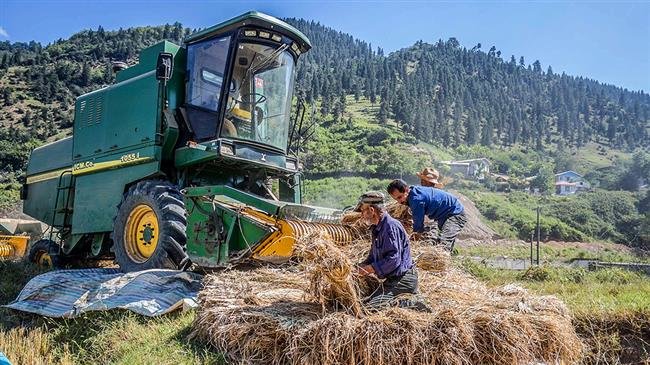

Iran has sold 74 tonnes of rice to Canada, marking the first export of the crop since the Islamic Republic in 1979, state news agency IRNA has reported.
The indica grade of type Tarom Hashemi was shipped in three consignments by the private sector, commercial director of Mazandaran Agriculture Jihad Organization Soleiman Hatamnejad told the agency.
The Tarom Hashemi cultivar is especially valued for its aroma and Hatamnejad said it had been selected for export because of its nutritional value and distinctive taste
Rice is mostly produced in northern Iran, in Mazandaran and Gilan provinces on the Caspian shores. Annual production stands at around 2.2 million, with another million tonnes imported.
Mazandaran, with 230,000 hectares of paddies, produces about one million tonnes of rice a year, or 42 percent of the country’s total.
According to secretary of Iran Rice Association Jamil Alizadeh Shayeq, irregular imports by some profiteers are becoming a headache for local farmers.
The country is also facing the problem of continued rice cultivation in the provinces which are facing a drought, such as Isfahan and Shiraz.
Last year, the government banned growing rice anywhere outside Gilan and Mazandaran but officials say some farmers do not observe the regulation.

The government also imposes seasonal import ban on rice to support local prices during the harvest season, but there are regular complaints of import quotas being breached by some traders.
Food security
Iran’s food security index stands at around 96 percent but US sanctions and a protracted drought are affecting the country’s inflationary trends and impacting access to food and its affordability. As a result, Iran is facing challenges for long-term food security.
In 2016, Iran’s ambassador to Kenya said the country Iran was looking to lease land in Africa for large-scale food production to serve local and export markets.
About a dozen Iranian companies had expressed interest in growing and processing rice, corn and wheat in East Africa, Hadi Farajvand said then.
Agriculture Minister Mahmoud Hojjati has said the government had envisioned investment on 500,000 hectares of farmland in a number of countries to produce food.
Iran is reportedly looking to lease land in Kenya, Uganda and Tanzania for large-scale food production to serve local and export markets.
Water-intensive rice and corn crops as well as oilseeds and livestock inputs have been cited by Agriculture Ministry officials as the target products which Iran seeks to grow on farmlands overseas.
Iran is also witnessing a change in dietary habits. While the traditional diet is based on wheat, fruits and vegetables, Iranians now consume more sugar, fat and oils.
Self-sufficiency plans
Since 1979, Iran has put self-sufficiency at the heart of its policies, especially in wheat which is the country’s staple food.
According to the United States Institute of Peace, Iran imported 65 percent of its food in 1979, but it now produces 66 percent of its food basket.
In doing so, the country has managed to reverse the upward trend of import dependence, but it still needs to import a significant amount of its food.

With US sanctions reimposed in August, Iranian shipments might be headed for choppy waters.
Foodstuffs are purportedly not restricted by US sanctions, but banking sanctions and asset freezes are making it difficult for trading houses to do business with Iran.
Last week, an official said the Iranian government needs no more wheat imports thanks to favorable crop harvest and procurement from local farmers at a time of diminishing grain stocks around the world.
Wheat is the dominant cereal crop accounting for almost 70 percent of the aggregate cereal production in Iran.








